ART @ HEAD2HEAD
My favourite artists are Franz Marc, August Macke and Wassily Kandinsky, who were members
of what has become known as the Expressionist Movement.
Franz Marc
Marc's exposure to the paintings of Van Gough in 1909
had a profound effect on his own work and lead him towards a style where superficial details are
omitted leaving a direct expression of "the inner spiritual side of nature".
Marc rejected the convention of painting from a human viewpoint. When painting
a deer in the woods he comments "it feels as a deer, and thus the landscape must also be deer"
He attempts to paint from within the animal.
Indeed this raises the paradox, that through Marc's heightened spiritual connection with animals,
he tended to anthropomorphise them in his paintings.
In 1910 August Macke saw Marc's work and was deeply affected by it. They soon became close friends.
That year Marc went to a show by the Munich New Artists' Association where he was delighted to find pieces
he described as having "supremeley spiritualised tenor" and
"outstanding examples of spatial organisation rhythm and colour theory"
Both aspects that he considered key in his own work. Among the members of the New Artists' Association where
none other than Wassily Kandinsky, Alexei von Jawlensky, Gabrielle Munter and Marianne von Werefkin.
In 1911 Marc became a member and was elected to the board.
He studied colour theory extensively and developed the notion that colours directly reflect innate qualities.
For example "Blue is the male principle, stern and spiritual.
Yellow the female principle, gentle cheerful and sensual.
Red is matter, brutal and heavy."
Another interesting development of the period is the tendency to equate colour with sound. A conceptual blending of
colour and musical tonality. Marc comments "blue and orange, a thoroughly festive sound"
Around 1911 there was growing hostility toward the foreignisation of German art. A stance that aggravated Marc greatly
During this period Kandinsky and Marc were formulating a plan to publish an almanac which would debate art
from differing cultural groups and include articles by the artists themselves.
Tension rose and later in the year he, Kandinsky and Munter left the New Artists' Association over clashes of principle.
The first issue of the "Blaue Reiter" was published in 1912.
Later in 1912, as Marc's work became increasingly abstract, he was impressed by the paintings of Munch, Heckel,
Picasso and Matisse at the Sonderbund Exhibition in Koln, even though many works by Blaue Reiter members had been rejected.
Shortly after the exhibition, Marc met Robert Delaunay in Paris.
Delaunay had taken cubism and introduced a heightened significance of
colour. The influence of cubism, revitalised via Delaunay's fascination with colour, is increasingly
evident in Marc's work from 1912 onwards. A time when Marc produced his most stunning paintings.
Having first lost the connection with humans, even the appeal of animals began to fade
and Marc plunged headlong into complete abstraction.
In 1914 both Marc and Macke volunteered for active service. Macke was killed the same year,
and Marc in March 1916 when he was hit by a shell.
These pictures have been reproduced so that they are best viewed with a display setting of 1024 X 768
and your internet browser in full-screen mode.
Full screen mode can be turned on and off by pressing the F11 key if you are a using internet explorer.
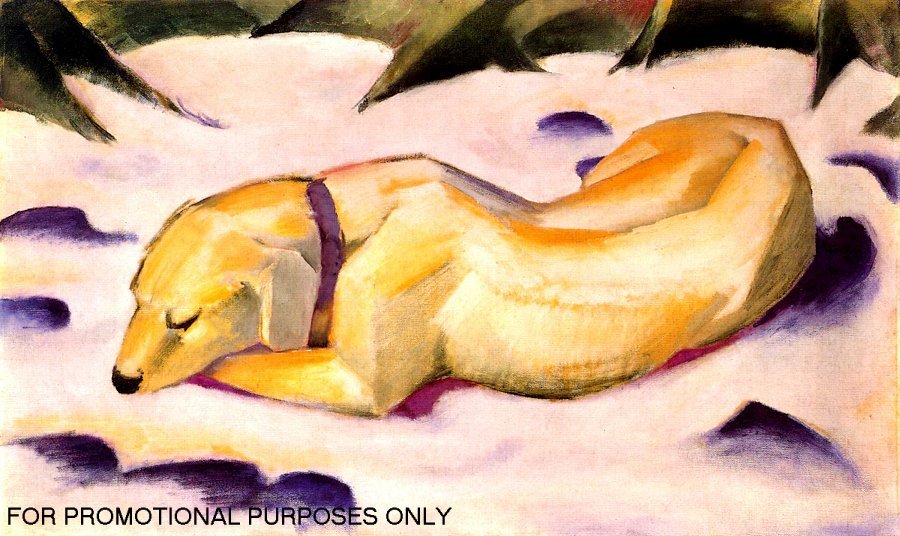
Dog Lying in the Snow 1910/11
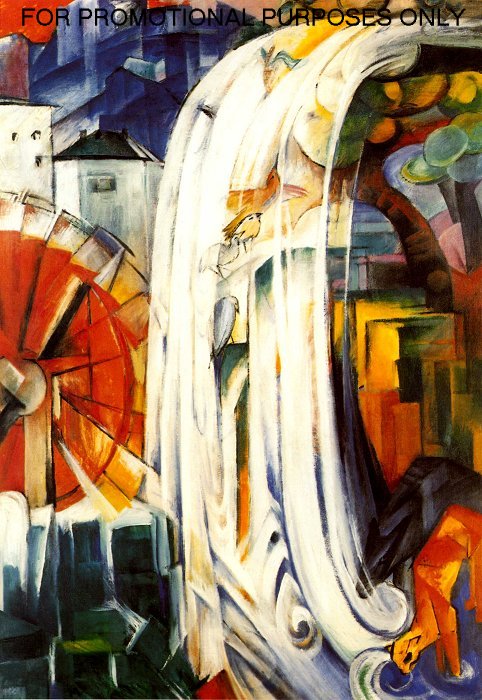
The Enchanted Mill 1913
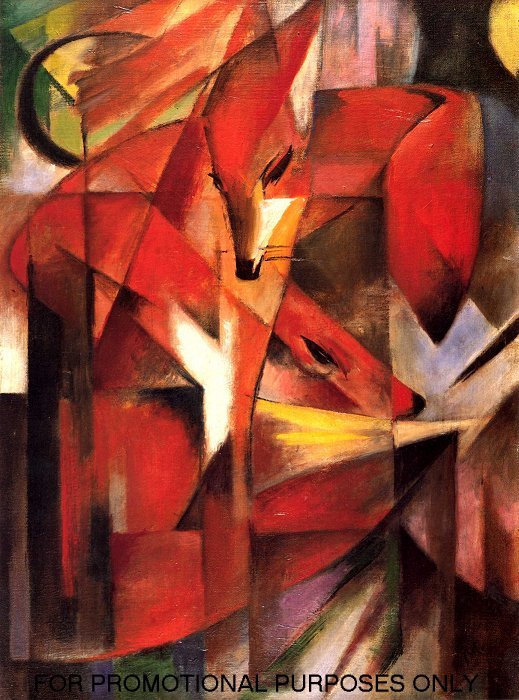
Foxes 1913
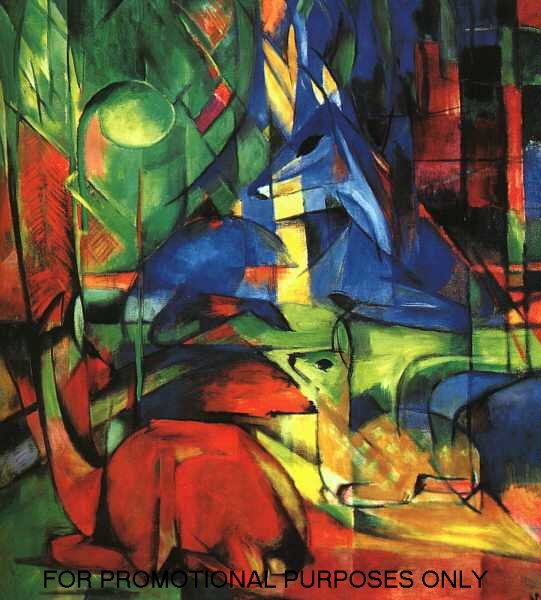
Deer in the Woods 2 1914
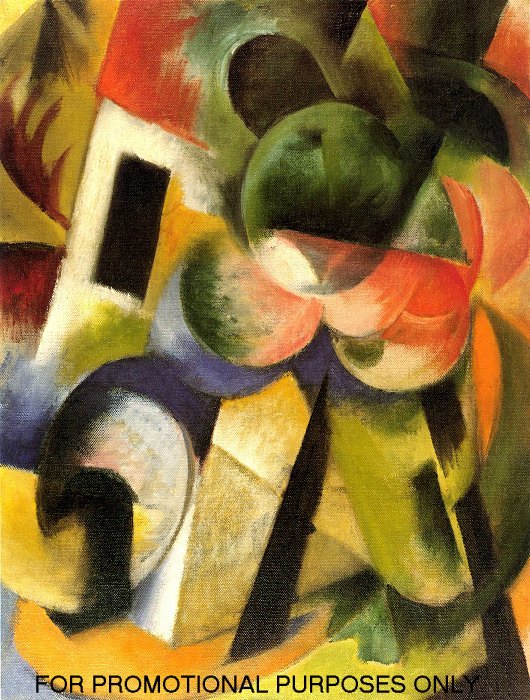
House With Trees 1914
If you like these pictures, there is a superb book by Taschen ISBN 3-8228-0544-0
about the life and work of Franz Marc which is available at Amazon.co.uk.
BACK TO MY HOMEPAGE









